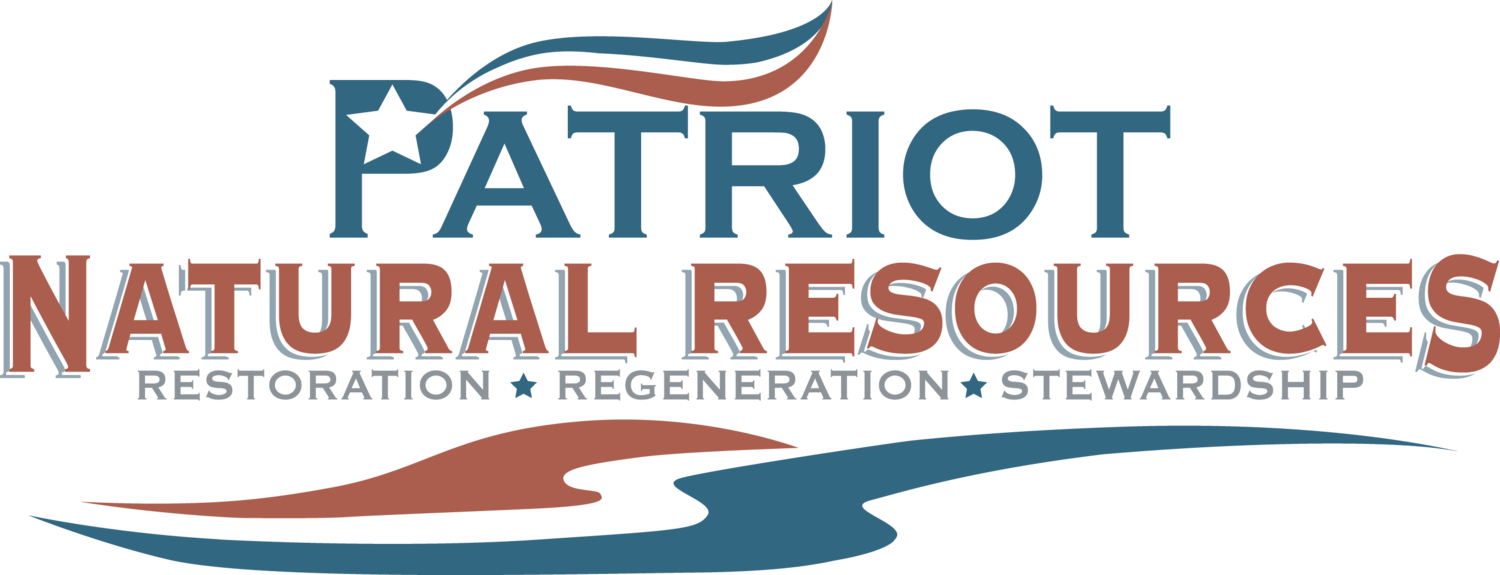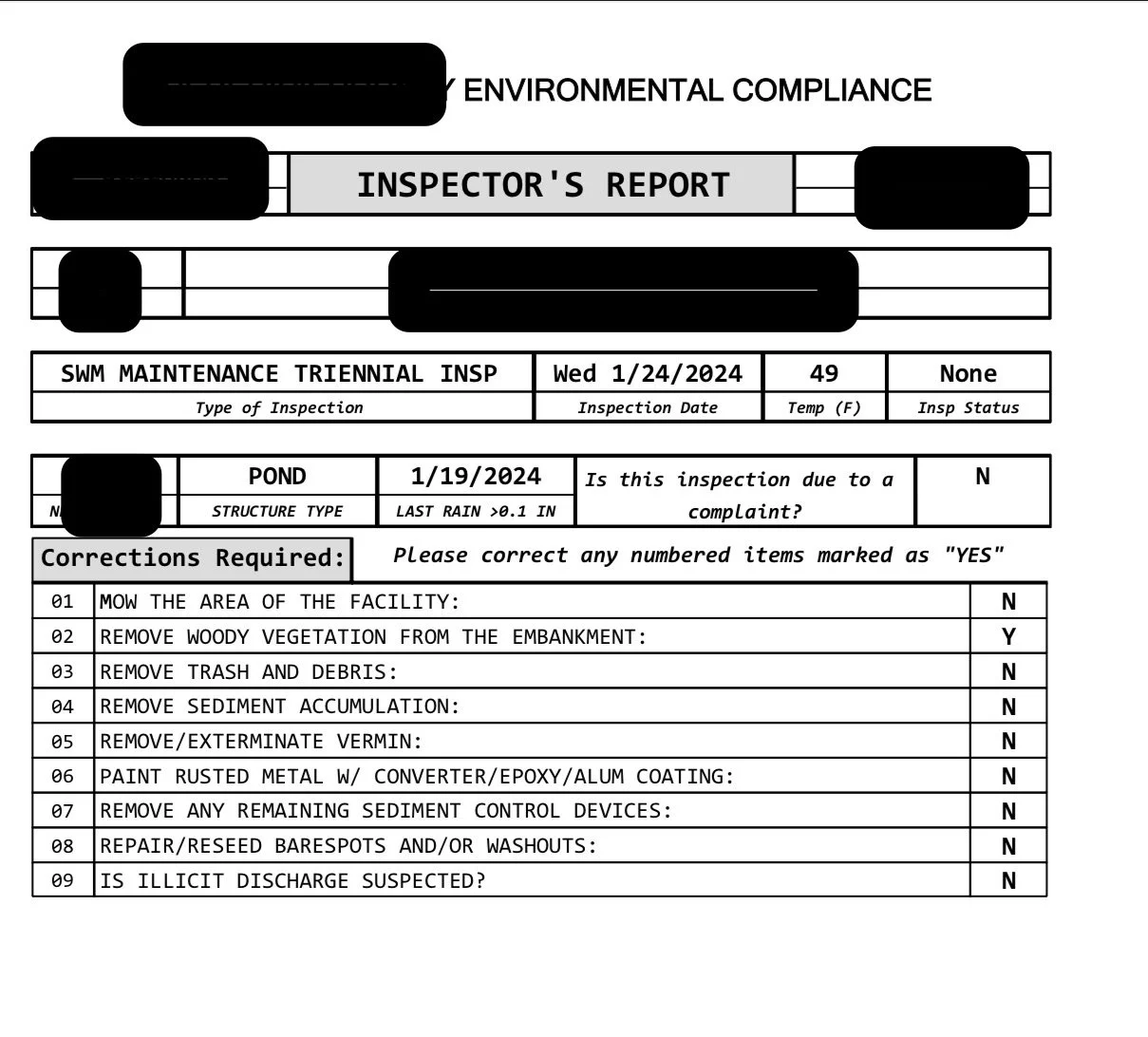What to Do When Your Stormwater System Receives a Corrective Action Order
Receiving a corrective action order for your stormwater system can be stressful, but it’s a critical step to address issues that may compromise the safety, functionality, and compliance of your facility. These orders, often issued by local governments or regulatory agencies, identify deficiencies or violations in your stormwater management system and require immediate action to bring it back into compliance.
For property owners, developers, and municipalities in Maryland, acting quickly and strategically can save time, money, and protect the environment. This article will guide you through the steps to take when you receive a corrective action order.
1. Understand the Corrective Action Order
Before taking any action, it’s essential to understand the details of the corrective action order:
• Nature of the Issue: Identify the specific violations or deficiencies outlined in the order. This could include sediment buildup, structural damage, non-compliance with Maryland’s Stormwater Management Act of 2007, or other issues.
• Timeline: Note the deadlines for addressing the issues and submitting proof of compliance.
• Potential Penalties: Understand the consequences of failing to comply, including fines or further legal action.
Tip: Contact the issuing agency for clarification if any part of the order is unclear. Understanding the requirements fully will ensure you address the issues effectively.
2. Conduct a Professional Inspection
Hire a stormwater management professional to perform a detailed inspection of your system. This step is crucial for identifying the root causes of the violations and creating a comprehensive plan to address them.
What to Look For During the Inspection:
• Structural issues in retention ponds, detention basins, or outlets.
• Sediment accumulation or blockages in spillways.
• Signs of erosion, overgrowth, or invasive vegetation.
• Evidence of poor water quality or pollution, such as algae blooms.
A professional inspection will also help you determine if the issue is isolated or part of a broader system failure.
3. Develop a Corrective Action Plan
After the inspection, work with your stormwater management professional to create a detailed corrective action plan. This plan should:
• Address All Deficiencies: Ensure that all issues identified in the corrective action order are resolved.
• Prioritize Urgent Repairs: Focus first on issues that pose immediate risks to public safety or the environment.
• Include Preventative Measures: Implement strategies to prevent future violations, such as routine maintenance schedules or erosion control measures.
• Align with Regulations: Ensure all actions comply with local, state, and federal stormwater regulations, particularly those protecting the Chesapeake Bay watershed.
4. Execute Repairs and Maintenance
Once your plan is approved, promptly begin repairs and maintenance. Common corrective actions include:
• Sediment Removal: Clear accumulated sediment to restore water capacity and improve flow.
• Structural Repairs: Fix damaged outlets, spillways, or embankments.
• Vegetation Management: Remove invasive plants and restore native vegetation to stabilize the system.
• Erosion Control: Address soil instability with riprap, silt fencing, or reseeding.
Hiring a professional team like Patriot Natural Resources ensures that the work is completed efficiently and to regulatory standards.
5. Document and Communicate
Proper documentation is critical for demonstrating compliance to the regulatory agency. Keep records of:
• Inspection reports and findings.
• All maintenance and repair activities, including before-and-after photos.
• Receipts and contracts for professional services.
Submit the required documentation by the deadline outlined in your corrective action order. Regular communication with the issuing agency can also help address any concerns and confirm that you are on track to resolve the issues.
6. Implement a Long-Term Maintenance Plan
To avoid future violations, establish a proactive maintenance plan for your stormwater system. This includes:
• Regular inspections to identify potential issues early.
• Routine sediment removal and vegetation control.
• Annual assessments to ensure compliance with Maryland’s evolving stormwater regulations.
A long-term plan not only prevents costly corrective action orders but also protects your property and the environment.
How Corrective Action Orders Protect Maryland’s Environment
Corrective action orders aren’t just about compliance—they play a vital role in protecting Maryland’s rivers, tributaries, and the Chesapeake Bay watershed. Properly maintained stormwater systems reduce pollution, prevent flooding, and ensure that runoff from your property does not harm local ecosystems.
Partner with Patriot Natural Resources for Expert Support
If your stormwater system has received a corrective action order, Patriot Natural Resources is here to help. We specialize in inspections, repairs, and maintenance to bring your system back into compliance and ensure long-term functionality.
Contact us today to schedule an inspection or learn more about our tailored solutions for property owners, developers, and municipalities in Maryland. Let us help you protect your property, meet compliance requirements, and support a healthier Chesapeake Bay.

